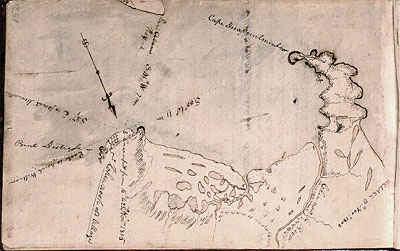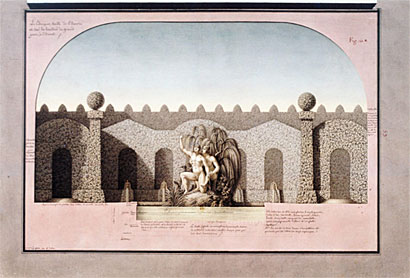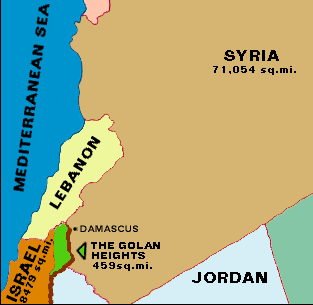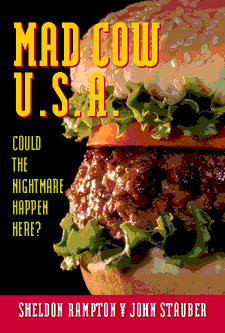|
| |
Archives
iraq — vietnam on internet time
WINNING AND LOSING
| |
One day late last summer, as the tally of bombings, shootings, and acts of sabotage against the American occupation in Iraq took on the unmistakable profile of a war of guerrilla insurgency, the office of Special Operations and Low-Intensity Conflict, at the Pentagon, designed and distributed e-mail flyers with a cautionary headline: “how to win a battle against terrorism and lose the war of ideas.” The e-mail invited those involved in the “wot”—the war on terrorism—to a private screening of the Italian Marxist director Gillo Pontecorvo’s 1966 masterpiece, “The Battle of Algiers.” The movie, which will be rereleased in theatres next month, is surely the most harrowing, and realistic, political epic ever filmed. It depicts the conflict between Algerian nationalist insurgents and French colonial forces in the late nineteen-fifties, or, as the flyer put it: “Children shoot soldiers at point-blank range. Women plant bombs in cafes. Soon the entire Arab population builds to a mad fervor. Sound familiar?”
| |
[more]
thanks to Talking Points Memo
A year of thwarted ambition
War in Iraq revealed the likely limits to American imperial power
| |
Saddam Hussein's arrest provided a long overdue, and desperately needed, morale-booster for the American and British governments. The fact that they had succeeded in finding neither Saddam nor Osama bin Laden had lent an air of ridicule to American military grandiloquence. The failure to capture Saddam spoke eloquently of an occupation that had veered far off course from the confident predictions that had been made at the time of the invasion.
We will have to wait and see what the longer-term effect of Saddam's arrest proves to be. Combined with Libya's new contrition, it should, for a period at least, ease some of the domestic pressure on Bush and perhaps even Blair. But it seems unlikely that it will change much, especially where it matters most, on the ground in Iraq.
| |
[more]
thanks to Politics in the Zeros
Pace of attacks on U.S. troops hasn't slowed since Saddam's capture
| |
Saddam Hussein's capture three weeks ago hasn't slowed the anti-American insurgency in Iraq, which now seems more entrenched than ever, according to a review of recent attacks and interviews with U.S. and Iraqi officials.
U.S. and Iraqi officials say they now doubt that Saddam had a significant role in directing guerrilla attacks. They say that while his interrogation has led to some arrests, basic information is still lacking about the guerrilla cells that are attacking U.S. and allied troops with sophistication and brutality.
| |
[more]
thanks to The Agonist
Insurgents are Civilians
by Robert Fisk
| |
Something very unpleasant is being let loose in Iraq. Just this week, a company commander in the US 1st Infantry Division in the north of the country admitted that, in order to elicit information about the guerrillas who are killing American troops, it was necessary to "instill fear" in the local villagers. An Iraqi interpreter working for the Americans had just taken an old lady from her home to frighten her daughters and grand-daughters into believing that she was being arrested.
A battalion commander in the same area put the point even more baldly. "With a heavy dose of fear and violence, and a lot of money for projects, I think we can convince these people that we are here to help them," he said. He was speaking from a village that his men had surrounded with barbed wire, upon which was a sign, stating: "This fence is here for your protection. Do not approach or try to cross, or you will be shot."
Try to explain that this treatment - and these words - offend the very basic humanity of the people whom the Americans claimed they came to "liberate" and you are met in Baghdad with the same explanation: that a very small "remnant" of "diehards" - loyal to the now-captured Saddam Hussein, etc, etc - have to be separated from the civilians whom they are "intimidating".
| |
[more]
thanks to American Samizdat
Bible Belt missionaries set out on a 'war for souls' in Iraq
US Christian evangelists want to "save Muslim souls" in Iraq, writes David Rennie in Cleveland
| |
American Christian missionaries have declared a "war for souls" in Iraq, telling supporters that the formal end of the US-led occupation next June will close an historic "window of opportunity".
Organising in secrecy, and emphasising their humanitarian aid work, Christian groups are pouring into the country, which is 97 per cent Muslim, bearing Arabic Bibles, videos and religious tracts designed to "save" Muslims from their "false" religion.
| |
[more]
thanks to Eschaton
photography
Proyecto Abril
| |
What would happen if we could only see once a day? What if that glance only lasted a few fractions of a second, the blink of an eye? How much intensity could that unexpected moment have?
Prisoners can not see the outside world. People that are born blind can only imagine it. People who have lost their sight may recall some bits and pieces, but these traces are always subject to the whims of memory.
What if we were in the hands of some cruel power that only allowed us this small share of sight and we were unable to decide the moment we wanted to see?
Something similar though not as daunting, happened to the photographer Maximiliano Amena last march. He summoned a group of colleagues to join him in this self imposed restriction of seeing only once a day. Of course “seeing” meant “shooting”. Only one photo of the same film during the entire month of April.
The limitations were mandatory once the participant accepted the rules. The possibilities of choosing when to photograph were inversely proportional to the absolute freedom of what to photograph.
This strange combination of being both free and locked produced an ever clicking shutter in the mind of 17 obsessed photographers who started the quest of this one opportunity. Along the way they found several unexpected foes, such as films that got stuck, cameras that suddenly stopped working, technical errors or unknown tremors at the time of shooting.
This idea and all the limits set by the rules and the ones set by the photographers to themselves resulted -as if it were some kind of secret weapon- in the April Project.
| |

Graciela Calabrese
04-04-03 At alow point. Attempts of self portrait.
[more]

Is There Hope? –
Where to Look for It
by Ran HaCohen
| |
Therefore, to estimate whether Israel is steering away from its traditional rejectionism just when it is backed as never before by the Bush administration, do not listen to the PM or to his self-proclaimed interpreters. Look at the occupied territories themselves instead. There, no sign of an improvement can be traced. Military incursions with massive killing and wounding of Palestinians, huge "collateral damage" and ceaseless destruction of houses are the Palestinians' daily bread, almost uncovered by the media.
We all heard of the 4 innocent Israelis killed on Thursday (25.12) near Tel-Aviv by a suicide bomber, the first such successful operation since early October. But who noticed the 4 innocent Palestinians killed alongside with a Jihad activist assassinated in Gaza the same Thursday? Or the 8 Palestinians killed in Rafah on Tuesday? Or the 5-year-old Palestinian child – yes, Mohammad Al-Arej was five years old – and the 16-year-old Palestinian boy, both killed near Nablus on Sunday? Or the 10 Palestinians killed and 31 homes destroyed by Israeli forces the week before?
The greatest danger right now is to fall into a new Oslo trap: to concentrate on speeches and accords, on diplomatic meetings and photo opportunities, and to ignore the facts on the ground – the daily dehumanization of Palestinians, the accelerated erection of the Apartheid Wall, and the systematic destruction of Palestinian life. As long as this Israeli policy does not change, there is no room for optimism. Ten years after the Oslo fraud, it is high time to remember that speeches and texts can be forgotten tomorrow, but facts on the ground are there to stay. | |
[more]
65 manned roadblocks, 58 trenches, 95 concrete barriers, 464 mounds of earth
| |
Volunteers from the Ta'ayush organization could tell the court a thing or two about the harm to the local population and about those who are contributing to "the sensitive security situation" that turns refusal to serve into an excess. Amnon Sadovsky of Ta'ayush, who for months has been assisting the battle for survival waged by Palestinian farmers and shepherds in the Mount Hebron area, has documented a new development with his camera: Residents of the settlement outposts, wearing skullcaps and tzitzit (ritual fringes), are no longer content with evicting Palestinian farmers from their lands, uprooting their trees and driving them out of their homes. The residents of the illegal settlements in the Sussya area have also begun driving Palestinian shepherds out of the string of caves in which they live. They take over these shepherds' miserable "houses" and steal their sheep, the poor man's lamb.
"In our tour of the area on Saturday, December 6, we came to the place that the Palestinians call `Gawawis,'" relates Sadovsky. "The place is about two kilometers from the settlement of Abigail. Four families from the Abu-Iram clan used to live there, but they disappeared a few months ago, apparently due to repeated harassment by the settlers. Stone walls separate the carefully tended groves of fruit trees that the residents left behind when they fled. About a month and a half ago, a number of young people from the surrounding [settlements] settled there, headed by a youth known to us as Itamar. With him are his wife, their baby and a several other young people, including two whom our members identified as residents of Havat Maon." According to Sadovsky, "Itamar explained to us that he and his friends decided to take over the caves in order to `redeem the land and return to a traditional way of life.' He took the trouble to say that they are `men of peace' and that they never raised a hand [against anybody]. Later, we saw settlers who had taken over a site known as Hirbat Srura and were not allowing Palestinians to approach the site."
| |
[more]
Report: Restriction of movement harming Palestinians' health
| |
According to a report published Monday by the human rights groups B'Tselem and Physicians for Human Rights, Israel's siege policy and restriction of Palestinians' movement is disrupting every aspect of Palestinian daily life and especially harms people seeking medical treatment.
According to the report, at least 38 Palestinians, including 14 minors, have died after IDF soldiers delayed or denied them passage at checkpoints. Seven of the deaths were of newborns whose mothers were prevented from reaching the hospital in time.
The Palestinian Central Bureau of Statistics published in September 2002 a survey according to which 84% of West Bank Palestinians report that they are harmed by the restrictions on movement imposed by Israel. 64.9% of them define the harm as "substantial". According to the survey 72.3% of the residents of the West Bank reported difficulties in reaching medical care. Of these, 51.4% rated the difficulty as "difficult to impossible".
| |
[more]
astronomy
Spitzer Space Telescope
| |
A new window to the universe has opened with today's release of the first dazzling images from NASA's newly named Spitzer Space Telescope, formerly known as the Space Infrared Telescope Facility.
The first observations, of a glowing stellar nursery; a swirling, dusty galaxy; a disc of planet-forming debris; and organic material in the distant universe, demonstrate the power of the telescope's infrared detectors to capture cosmic features never before seen.
The Spitzer Space Telescope was also officially named today after the late Dr. Lyman Spitzer, Jr. He was one of the 20th century's most influential scientists, and in the mid-1940s, he first proposed placing telescopes in space.
"NASA's newest Great Observatory is open for business, and it is beginning to take its place at the forefront of science," said NASA's Associate Administrator for Space Science, Dr. Ed Weiler. "Like Hubble, Compton and Chandra, the new Spitzer Space Telescope will soon be making major discoveries, and, as these first images show, should excite the public with views of the cosmos like we've never had before."
| |

[more]
afghanistan
Afghan Talks Adjourn, Deeply Divided on Ethnic Lines
| |
Editors Note: As the spotlight continues to focus on Iraq, control continues to unravel in Afghanistan. Throughout the country, regional warlords are readying their armies for another bloody civil war, similar to the events that led to the rise of the Taliban. When the Grand Council broke down into 10 committees focusing on different parts of the constitution, all 10 committees were chaired by the Muhajadeen, a recipe for failure. Judging by the following story, the failures continue. -ad
The constitutional grand council adjourned in disarray Thursday, leaving the entire process of drawing up a new constitution badly damaged.
The crisis has revealed a bitter struggle between the leaders of the country, with President Hamid Karzai and his Pashtun kinsmen on one side, and on the other the Islamist leaders and ethnic minorities of the north, who are seeking to preserve some of their wartime power.
| |
[more]
scanner art
Black Rose Gallery

[more]
euro/dollar
The Euro Rises; Anxiety Also
| |
Each anniversary has its own anxiety. At the beginning of 2003, it was the inflationary euro. Today, two years after the start of bill and coin circulation, it's the strong euro. During the past year, the European currency has appreciated by 22% against the dollar and for the past month, it has hit one record after another against the dollar. Yesterday, the euro crossed the threshold of 1.26 dollars. Numerous forecasters, moreover, judge that the dollar's fall will continue for one essential reason: the size of American budget deficits panics investors, especially in Asia. On top of that, no improvement is on the horizon. These last few days, speculators have had a field day, taking advantage of low volumes on exchange markets to pound the dollar.
[...]
Today everyone asks the same question: how high can the euro climb? "The dollar seems to be engaged in an endless fall," one Hong Kong and Shanghai Banking Corp economist pronounced. Some groups, like LVMH or Danone, console themselves with their Asian exports. Others get ready for the worst. Philippe Camus, joint president of EADS, Airbus' mother company, declared in mid-December that his group would have to adopt "radical" measures should the European currency exceed the $1.30 threshold for any extended period, by increasing the proportion of suppliers "whose costs are in dollars."
| |
[more]
explorers
Lewis and Clark
Illustrations from the Journals

Mouth of the Columbia River
Nov. 16-25, 1805 (Cape Disappointment)
[more]
thanks to The Cartoonist
the thing that eats your brain
It's the Cow Feed, Stupid!
by John Stauber
| |
The USDA's much ballyhooed new measures to address the emergence of mad cow disease in the US are wholly inadequate. Until there is a complete and total ban on all feeding of slaughterhouse waste to livestock, coupled with the testing of millions of animals, mad cow disease will continue to amplifying and spread in US animal feed and among livestock. Eventually we will see cases of human mad cow disease emerging. It was a decade after the recognition of the first mad cow in Britain that the human deaths, continuing today, began appearing.
We know now that in the US the so called "firewall," the FDA's 1997 feed regulation misnamed a "feed ban," has been woefully ineffective, a farce. Sheldon Rampton and I exposed this in our 1997 book, Mad Cow USA: Could the Nightmare Happen Here?
We waited to see what the FDA would do before we concluded our book in the fall of 1997. The FDA wrote feed regulations that allowed the livestock and animal feed industry to continue their dangerous practices that are spreading mad cow disease in North America.
The USDA knew way back in 1991, more than a decade ago, that a feed ban was necessary to protect human and animal health, but sided with the livestock industry. In a 1991 report I obtained under the Freedom of Information Act USDA said, "the advantage of this option is that it minimizes the risk of BSE. The disadvantage is that the cost to the livestock and rendering industries would be substantial." (Mad Cow USA, p. 149-150)
The 1997 FDA feed regulation is not a feed ban, but a labeling requirement that meat and bone meal from cattle and other ruminants be labeled 'do not feed to ruminants.' (MCUSA, p. 215-218) Government investigators have found that this rule has been widely ignored and poorly enforced. Without offering proof, USDA officials now say there is 99% compliance with this rule.
However, even if that were true, it would mean little since farmers, ranchers and cattle producers can buy properly labeled feed and still feed it to cattle. There is no on-farm inspection of how even properly labeled feed is actually used, and such inspection is impossible.
As long as billions of pounds of rendered slaughterhouse waste are being fed to livestock, labeling regulations and the sort of partial requirements that USDA announced December 30, 2003, will not stop mad cow disease from spreading.
| |
[more]
A free and complete copy of "Mad Cow USA: Could the Nightmare Happen Here?" Can be downloaded at: http://www.prwatch.org/books/madcow.html
Frozen French Fries Prefried In Beef Tallow Sit In Limbo
| |
Fallout from the mad cow scare in Washington state has hit the potato industry, with more than $500,000 worth of frozen French fries -- prefried in beef tallow -- held in limbo at ports.
The delay raises concerns that other exports containing beef products could be affected by the bans countries have imposed on U.S. beef because of mad cow disease.
| |
[more]
architecture
Jean-Jacques Lequeu: a visionary architect
| |
Jean-Jacques Lequeu was an 18th century French architect who designed many strange and wonderful buildings - none of which were ever actually constructed.
| |

[more]
israel/syria
The Golan Heights were taken fom Syria in the 1967 war. When you read of peace talks with Syria, this is the bone of contention.

Golan-- the human dimension
| |
The Sharon government has been hinting that, in the absence of any credible peace diplomacy toward the Palestinians, it might be prepared to resume the long-stalled talks with Syria.
What else is new? The tactic of "threatening" to turn away from one track of the so-called "peace process" (a.k.a. the peace-free process: all process and none of the peace) is an old, old one for Israeli leaders of both major parties.
And then, just as those hints about possible talks with Syria start going around, the Sharon government announces a massive new settlement-building project on the Golan.
Again, so what else is new?
| |
[more]
Golan Days
by Helena Cobban
| |
Broad sweeps of fertile land being farmed by prosperous Israeli settlers. An embattled Arab community maintaining a tough-minded collective resistance to the occupation -- even as it fights to hang onto its remaining lands. Deep divisions among the settlers over whether they would ever be prepared to leave... All this and more I discovered on a recent visit to the occupied Golan Heights, a journey that helped to put a human face on what many outsiders look at mainly as a 'strategic' or military issues: the issue of the Golan.
On my journey I met community organizers from Majdal Shams and other Syrian- Arab villages, who under difficult circumstances are keeping alive the spirit of resistance they showed most publicly during the successful 1981-82 campaign to resist having Israeli identity cards imposed on them. I met an Israeli Member of Knesset, one of the first settlers on the Golan back in July 1967, whose successful agitation against any withdrawal acted as a strong brake on Rabin's diplomacy back in 1995, and whose role in forming a new political party, 'Third Way', helped to bring down the Labor government in 1996. And I met a different kind of settler leader, too: a spokesman for the point of view that in the event of a full peace with Syria, all options including a full withdrawal should be considered -- and he pointed out that while 'Third Way' gained only 17 percent of settlers' votes in '96, Labor, which remained committed to a withdrawal won more than 50 percent...
Altogether, the situation on the Golan, both demographically and politically, has many features different from the parallel occupation being run just a few kilometers to the south, in the occupied West Bank.
What is the same between the two, however, is the daily battle of the indigenous Arab communities to hang onto their land and their national- political identity in the face of concerted Israeli attempts to strip them of both.
| |
[more]
car art
Automotive Graffiti

[more]
thanks to Riley Dog
valerie plame
After a long quiet period, the Valerie Plame affair may be heating up.
Ashcroft Takes a Hike
| |
You remember the Valerie Plame affair, don't you? Anonymous White House official deliberately outs CIA non-official cover operative to score a few cheap political points against her husband?
Ring any bells? Anything at all?
No, it wasn't the plot of the last Mission Impossible movie.
But if your memory does stretch all the way back to the distant days of last September, you may interested to know that Attorney General John Ashcroft has finally recused himself from the investigation, and appointed a special prosecutor to take his place:
| |
[more]
Here are some comments from Josh Marshall at Talking Points Memo.
December 30, 2003 -- 04:31 PM EDT
| |
I was having lunch with a friend today, and mid-way through our meal I noticed a TV near the bar running CNN with the tell-tale 'Breaking News' logo.
I looked over and saw that it was some Justice Department news conference and figured it couldn't be something too interesting.
Getting back to my office this afternoon I see it was a bit of a bigger deal than I thought.
As you've probably already seen, Attorney General John Ashcroft has decided to recuse himself from the Plame leak investigation, which will be taken over by Patrick J. Fitzgerald, the current United States Attorney in Chicago.
| |
[more]
December 30, 2003 -- 09:18 PM EDT
| |
A few more quick thoughts on John Ashcroft's recusal in the Plame investigation.
First, I've heard a bit more about Patrick Fitzgerald, the man Deputy Attorney General James Comey appointed to serve as a special prosecutor in the Plame case. And,
thus far, everything I've heard leads me to believe he'll lead an independent investigation.
One can never know in advance of course what motives or predispositions a person might have. The proof of the pudding will be in the eating(hackneyed phrase? yes. but clear and to the point). But one can look at clues from past performance. And those clues point in the right direction.
And then, another issue. Why did this happen? And why now?
A few possibilities suggest themselves.
| |
[more]
January 02, 2004 -- 01:27 PM EDT
| |
Things are seldom as they appear on the surface. And the Plame matter is a case in point.
At the moment the discussion is about whether the doers can beat the rap. (Did the person at the White House know she was covert, etc.?)
[...]
But that's not the issue and it never has been. At least it hasn't been since very early on. Because the basic facts of the matter have been in plain sight from the beginning. And whether an aide to the president is indicted or goes to prison is largely an issue for that particular person.
The issue here -- from the beginning, and now to the end -- is whether the president accepts such behavior and what the standard operating procedure in the Bush White House is: Do you punish a political opponent by attacking his family if it means exposing one of the country's covert intelligence operatives and breaking the law?
That's a pretty straightforward standard. And by all the available evidence this White House considers it acceptable behavior.
| |
[more]
paperback art
Vintage Paperbacks & Digests

[more]
thanks to The Cartoonist
Reefer brawls? How did I miss out on those?
|
Wednesday December 31 2003
|
happy new year!
11 months until we elect a new President. Let the games begin.
diversion
Make sure your speakers are on, select F11 to make the image full screen, and see if you can click on anything. Maybe you can save a little world. Enjoy!

[more]
thanks to Wooster Collective
the thing that eats your brain
I just spent the last two days reading this book. It is currently out of print but will be available in paperback soon. However, you can download it from this site in PDF format. An *excellent* book on mad cow disease, it's history, it's variations, and how our government is looking out for us. Right!
Mad Cow USA:
Could the Nightmare Happen Here?
by Sheldon Rampton and John Stauber

On May 12, 1997, ABC World News Tonight reported that "people may not be contracting Alzheimer's as often as we think. The bad news is that they may be getting something worse instead. . . . This is about Creutzfeldt-Jakob Disease. It is fatal. It destroys your brain, and what is worse, it is infectious."
In England, Creutzfeldt-Jakob Disease (CJD) has already become a household word because of its association with that country's epidemic of mad cow disease. In 1996, the news that young people were dying from eating infected beef shook England and all of Europe.
Rampton and Stauber, authors of the critically-acclaimed Toxic Sludge Is Good for You: Lies Damn Lies and the Public Relations Industry, reveal how mad cow disease has emerged as a result of modern, intensive farming practices whose true risks are kept hidden by government and industry denials.
[more]
Have you downloaded the book yet? What's stopping you? Do it. Now.
Mad Cow USA: The Nightmare Begins
By John Stauber
Since the announcement of United States mad cow disease our phones have rung off the hook with interview requests. The New York Times noted that "The 1997 book 'Mad Cow USA', by Sheldon Rampton and John C. Stauber, made the case that the disease could enter the United States from Europe in contaminated feed." Articles in the New York Times also cited other warnings from Consumer Union's Michael Hansen, and Dr. Stanley Prusiner, the Nobel Prize-winning researcher who this week called the current United States practice of weaning calves on cattle blood protein "stupid." All of this would be very vindicating, except for one problem: the millions of dollars that the government and industry are spending on PR to pull the wool over the public's eyes might just succeed in forestalling the necessary steps that now, at this late date, must still be taken to adequately deal with this crisis.
The good news is that those steps are rather simple and understandable. We should ship Ann Veneman and her smartest advisors to Britain where they can copy the successful feed and testing regulations that have solved the mad cow problem in Europe. Veneman and her advisors should institute a complete and total ban on feeding any slaughterhouse waste to livestock. You may think this is already the case because that's what industry and government said they did back in the summer of 1997. But beside the cattle blood being legally fed back to cattle, billions of pounds of rendered fat, blood meal, meat and bone meal from pigs and poultry are rendered and fed to cattle, and cattle are rendered and fed to other food species, a perfect environment for spreading and amplifying mad cow disease and even for creating new strains of the disease.
The feed rules that the United States must adopt can be summarized this way: you might not be a vegetarian, but the animals you eat must be. The United States must also institute an immediate testing regime that will test millions of cattle, not the 20,000 tested out of 35 million slaughtered in the past year in the United States. Japan now tests all cattle before consumption, and disease experts like Dr. Prusiner recommend this goal for the United States. And of course, no sick "downer" cows, barely able to move, should be fed to any humans. These are the type of animals most likely to be infected with mad cow and other ailments – although mad cows can also seem completely healthy at the time of slaughter, which is why testing all animals must be the goal.
[more]
USDA Misleading American Public about Beef Safety
It is not surprising that the U.S. has mad cow disease given our flaunting of World Health Organization recommendations.[1] What is surprising, however, is that we actually found a case given the inadequacy of our surveillance program, a level of testing that Nobel laureate Stanley Prusiner, probably the world's leading expert on these diseases, calls simply "appalling."[2] Europe and Japan follow World Health Organization guidelines[3] and test every downer cow for mad cow disease[4]; the U.S. has tested less than 2% of downers over the last decade.[5] Most of the U.S. downer cows, too sick or injured to even walk, end up on our dinner plates.[6]
[more]
thanks to Undernews
testingtesting
Click on in tonight (7pm (pacific)) for another evening of music from my living room. Tonight we have guitar player Ed Newkirk along with the fun and frivolity of the TestingTesting House Band — Derek Parrott, Joanne Rouse, Steve Showell, and Barton Cole who also does his Commentary from the Wires. TT House Band member Lisa Toomey is vacationing in sunny Southern California and Judy Magidson may be here instead. Join us for our last show of the year. A fun time will be had by all.
books
Bhutan
a visual odyssey across the last Himalayan kingdom.

[more]
thanks to BookLab II

Trapped in Someone Else's Dream
There is a brutal military occupation in the West Bank and Gaza and it is being used to systematically expropriate land from the Palestinians and lock them into ghettos. This is a lived reality for the millions of Palestinians in the West Bank and Gaza. However, these facts are carefully avoided in the official language of peace. The latest 'road map' does not even mention the occupation, nor that Palestinians lands are being taken from them at gun point. Instead, it shamelessly places all the responsibility for the violence on the shoulders of an essentially unarmed and outgunned people
Rafah is perhaps one of the first Palestinian ghettos. A town of about 100,000 it is surrounded by steel walls, electric fences, checkpoints and gun towers. Pilotless drones patrol the skies at night and curfews control the movement of people. It is from such a hell that the Palestinians are expected to extend a 'hand towards peace', and to 'give up their violent ways'. Meanwhile, the occupation continues, and so does the theft of land.

The final kiss. A father bids farewell to his 14-year old son killed by a stray bullet while playing football on the streets. The image reminds me of Goethe’s poem about the erl-king - ‘who rides through the night dark and drear? The father it is, with his infant so dear’ and so on
[more]
117 Palestinians killed, hundreds injured during media's "relative calm"
On December 25, an Israeli assassination squad killed five Palestinians in Gaza, and injured fifteen. Three of the dead were civilians. A short time later, a Palestinian blew himself up at a bus stop in the Tel Aviv suburb of Petah Tikva, killing four Israelis, three of whom were confirmed by Ha'aretz to be soldiers.
Many leading media organizations were quick to declare that these two incidents marked the end of a period of "relative calm" or "lull" in Israeli-Palestinian violence, that had supposedly lasted since the last Palestinian suicide attack in Haifa on 4 October.
In fact, the period since 4 October has been one of intense Israeli violence, in which 117 Palestinians were killed, including 23 children. At the same time, Israel destroyed almost five hundred Palestinian homes throughout the Occupied Territories.
[more]
Sharon's Speech: Decoded Version
by Uri Avnery
He read out the written text of his speech, word for word, without raising his eyes from the page.
It was vital for him to stick to the exact wording, since it was an encoded text. It is impossible to decipher it without breaking the code. And it is impossible to break the code without knowing Ariel Sharon very well indeed.
So it is no surprise that the flood of interpretations in Israel and abroad was ridiculous. The commentators just did not understand what they had heard. That's why they wrote things like "He did not say anything new", "He has no plan", "He is marking time", "He is old and tired". And the usual Washington reaction: "A positive step, but..."
Nonsense. In his speech, Sharon outlined a whole, detailed - and extremely dangerous - plan. Those who did not understand - Israelis, Palestinians and foreign diplomats - will be unable to react effectively.
[more]
Ghosts of a Dream
My parents rise up from the grave, demanding to know: How has it come to this? How did a great and persecuted people become the persecutors?
Press Briefing by Scott McClellan
Q Is the President in favor of international inspection of Israel's nuclear arsenal, which is pretty well known?
MR. McCLELLAN: I don't know that I agree with that, the premise of your question. But the United States has a longstanding position of universal adherence to the treaty on the nonproliferation of nuclear weapons. That has been our longstanding position --
Q They never signed it.
MR. McCLELLAN: -- and that is universal adherence. Well, we have urged all states that have not yet adhered to the treaty to do so, and to accept the IAEA safeguards on nuclear activities that would come with it.
Q Are we trying to persuade Israel to sign it, and to be open to inspection?
MR. McCLELLAN: I think that, one, in terms of specifics about the Israeli government, you need to refer those questions to the Israeli government.
Q No, no, I'm asking our position.
MR. McCLELLAN: And I've told you that the long held position of the United States is the universal adherence to the nonproliferation treaty.
[more]
The Jewish Choice:
Human Equality or Israel?
Demolishing the Myths of the Israel-Palestine Conflict
UN satellites eye Israeli barrier
The UN is keeping a close eye from space on the path of Israel's controversial West Bank barrier.
The price of ignorance
By Gideon Levy
The suicide bomber at the Geha Junction, Shehad Hanani, was from Beit Furik, one of the most imprisoned villages in the territories that is surrounded by earth roadblocks on all sides. It's a place where women in labor and the sick have to risk walking through fields to get to the hospital in adjacent Nablus. At least one woman in labor, Rula Ashatiya, gave birth at the Beit Furik checkpoint and lost her infant. Few Israelis are capable of imagining what life is like in Beit Furik: the almost universal unemployment, poverty, endless siege and humiliations of life inside a prison. A young man like Hanani, who was 21, had no reason to get up in the morning other than to face another day of joblessness and humiliation.
[more]
ad art
Period Paper
for history and decor

[more]
thanks to life in the present
economy
U.S. incomes falling, poverty rate rising
The annual income of middle-class Americans fell by almost $500 last year and the number of people in poverty rose by 1.7 million, the Census Bureau reported Friday, showing the lingering effects of the country's long economic downturn and suggesting the political trouble that may lie ahead for President Bush.
The Census data marked the second consecutive year of such discouraging trends after nearly a decade of continuous improvement. The rise in those classified as living in poverty suggested that the damage of the 2001 recession was finally beginning to reach low-income groups, which had been surprisingly resistant to its ill effects.
Separately, the government said Friday that the U.S. economy grew at a 3.3 percent annual rate from April through June, slightly faster than the 3.1 percent rate it had previously estimated and its fastest pace since last fall. Higher growth usually increases income and reduces poverty, but with employers still slashing payrolls, it is unlikely that has happened yet.
[more]
thanks to Counterspin Central
film
This should be a good one to watch out for, if you like Robert Altman. And if you don't, you should.
"The Company"
Robert Altman's surpassingly beautiful ballet movie feels lighter than air -- but in fact it's the great director's most tender and memorable film in years.

Robert Altman has been moving large casts of characters smoothly through his movies and orchestrating passages of overlapping dialogue for so long now that he has often seemed as much choreographer as director. So it's fitting that he's gotten around to making a dance movie. "The Company," filmed with members of Chicago's Joffrey Ballet, must be the least flossy movie ever made about the world of dance. Ballet and modern dance haven't been particularly well served by the movies. There was Carroll Ballard's film of the Maurice Sendak-designed "Nutcracker," but mostly there are fragments: the Roland Petit ballet that opened "White Nights," and Mikhail Baryshnikov and Gregory Hines' Twyla Tharp-choreographed duet in the same movie; and the few precious moments of Baryshnikov dancing in the otherwise appalling "The Turning Point."
That stinker was pretty typical of the way the movies have always approached high art -- with genuflection and blandishments about the discipline and sacrifice to which the artiste must submit. Who needs it? I'd have traded all of it for the moment from the 2000 "Center Stage" where the statuesque Zoe Saldana uses the point of her toe shoes to stub out a cigarette. That image from a throwaway teen movie was connected to the details of real life in a way that movies about art rarely are. Who the hell can appreciate any art if you're made to feel that becoming an artist is joining the priesthood?
"The Company" has no more time for preachments about the nunnery of "the dahnce" than Altman's "Vincent and Theo" had for preachments about the priesthood of art. "The Company" isn't fevered and tortured the way "Vincent and Theo" was. It isn't about the agony of making art but about the pleasure of it. In this case, that pleasure is inseparable from the nearly sexual excitement of young people finding out what amazing things their bodies are capable of. Altman's movie is lighter than air, but it's also one of the most fluid expressions of his technique. You could say that it's all grace notes, but I prefer the description of my Salon colleague Stephanie Zacharek, that it's all pulses. A choreographer distills everything to movement; Altman distills the meaning of "The Company" to the movement.
[more]
pakistan
Pakistan: the west's soft centre
If Musharraf is assassinated, the war on terror will also be a victim
Here is one terrorist threat even Tony Blair doesn't need to vamp up. It is self-evidently real and ominously recurrent. If, one day soon, it claims its target, then the world of Bush and Blair - plus their so-called war against Osama and chums - will be rocked to its core. The peril couldn't be greater, the edifice more ripe for toppling. Yet somehow, when these bombs go off, we shrug and look away. Somehow we don't make the connections.
Consider the chill facts, though. Twice, during the 10 days before Christmas, General Pervez Musharraf, Pakistan's president, has narrowly survived highly professional assassination attempts. First, the bridge he was travelling over near Islamabad was destroyed by five separate charges only seconds after his car made it to the other side. (An electronic blocking device in his limo bought him the fraction of time that saved his life.)
Then, as if to signal al-Qaida's return to more tested methods, a Rawalpindi suicide attack killed 14 people and injured nearly 50. Musharraf, again, escaped by seconds. How many more lives does this president have left?
Not too many, perhaps. He wasn't, on either occasion, following an advertised route. He and his guards were proceeding privately from point A to point B. His would-be killers weren't leaning on a lamppost in case a nice little target passed by. They knew he was coming. They knew where to plant sophisticated explosives. Their intelligence was perfect. They have an inside track. If they keep to it, they'll surely get him in the end. Which is when the core really starts to rock.
[more]
poster art
All the Rage
The Poster in Victoria 1850-2000

[more]
thanks to life in the present
|
|
|
|
















